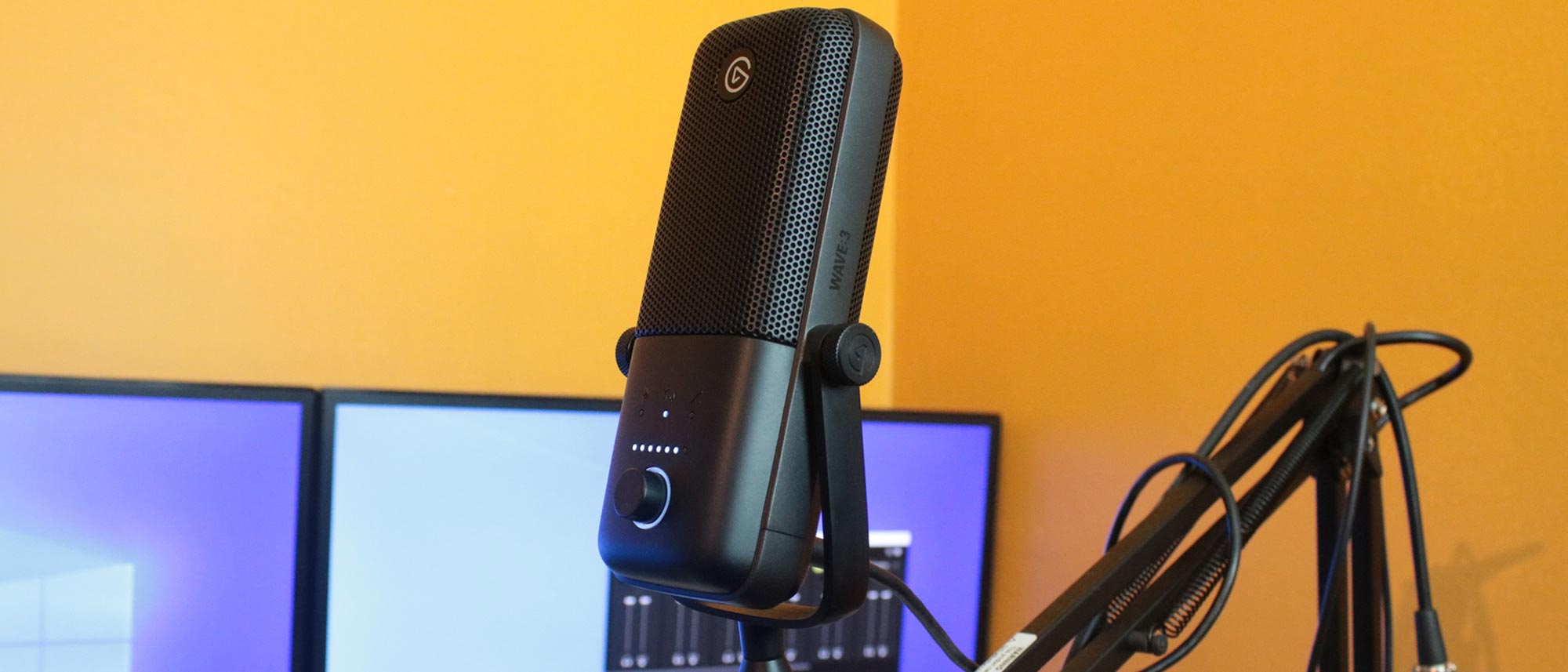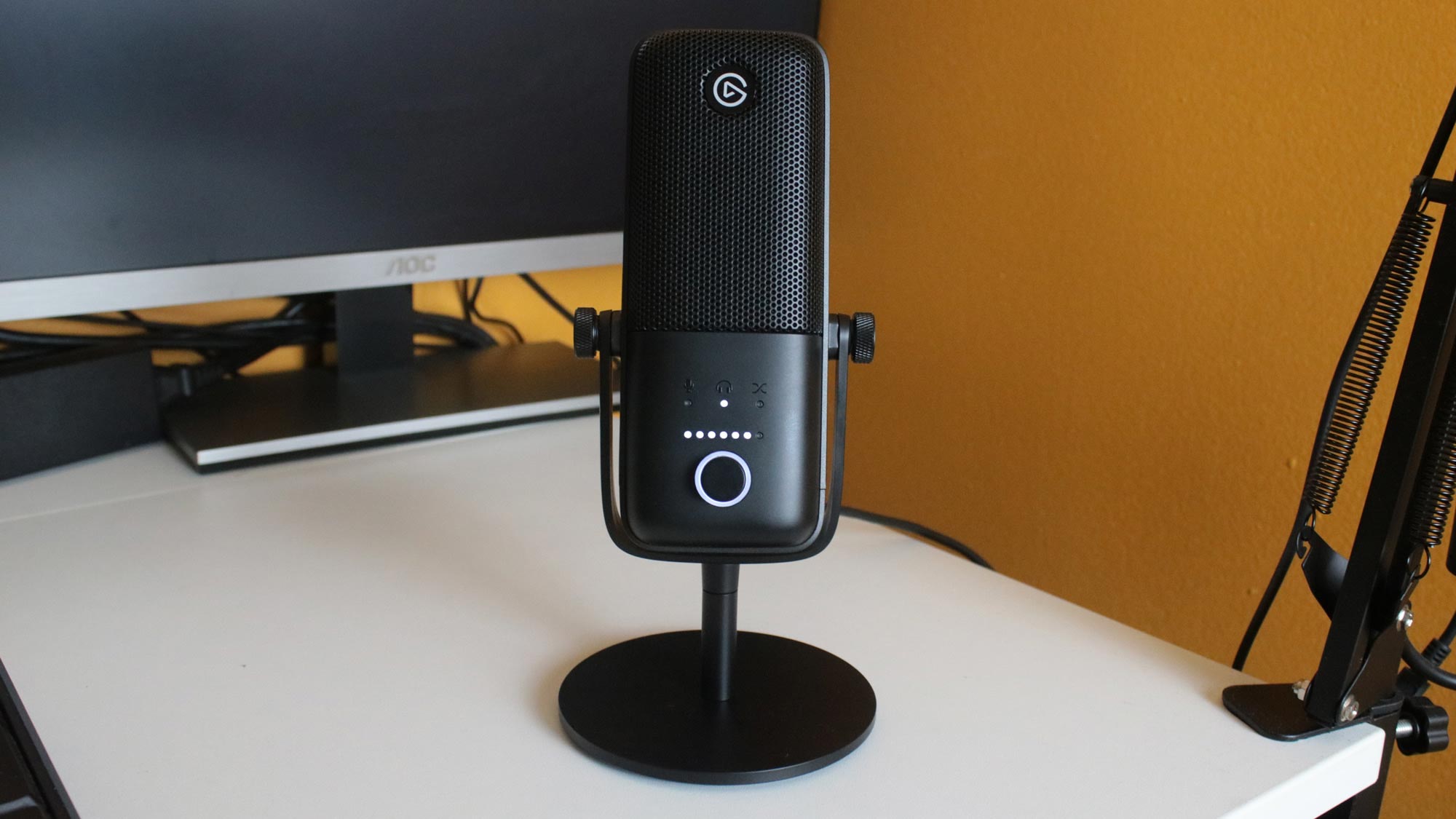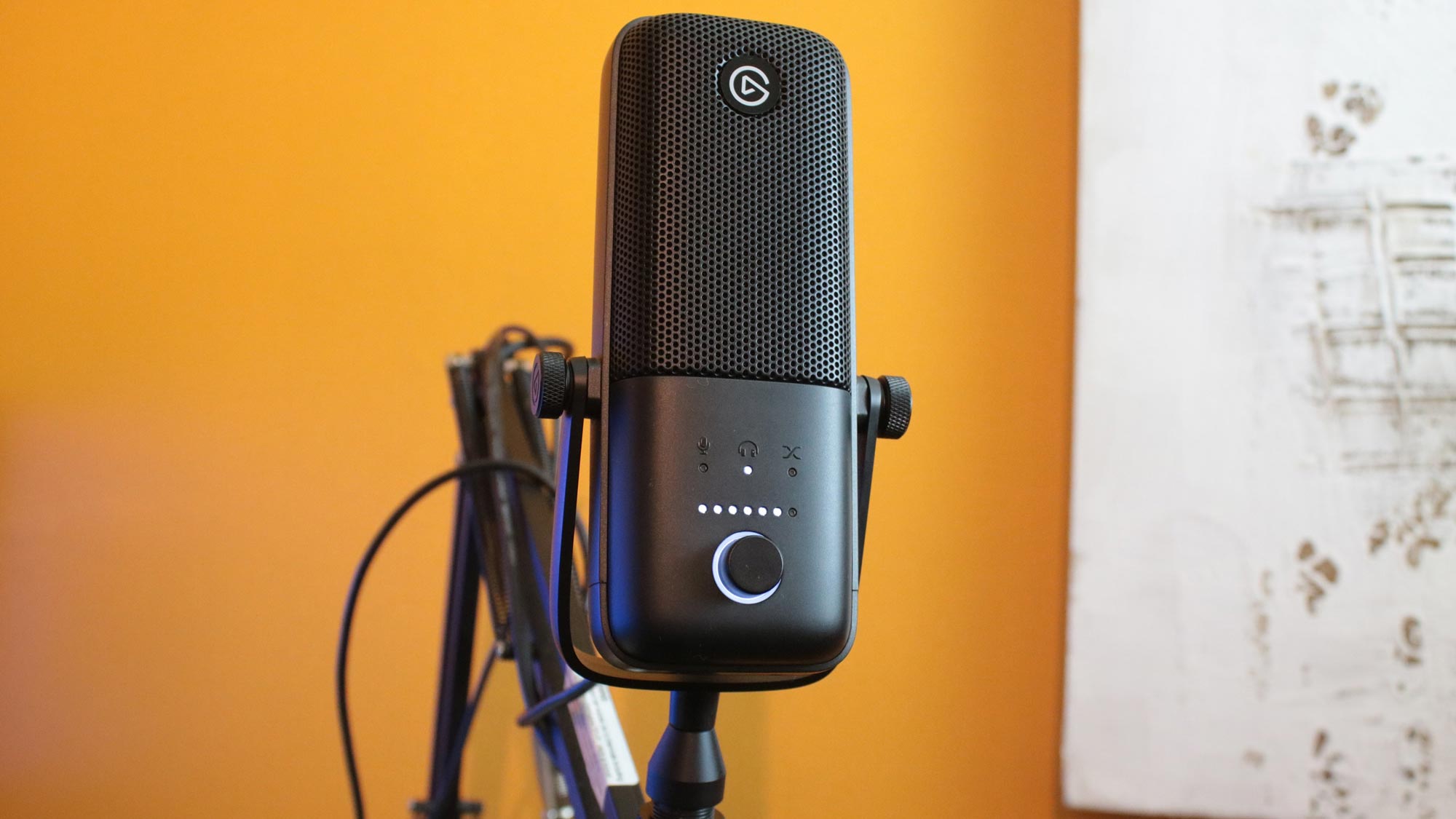Laptop Mag Verdict
The Elgato Wave 3 delivers high-quality audio with easy-to-use software in a lightweight elegant design
Pros
- +
Crystal clear sound
- +
Elegant, lightweight design
- +
Easy-to-use Wave Link Software
Cons
- -
Partially plastic build
- -
Pricey
Why you can trust Laptop Mag
Elgato’s new Wave 3 microphone has arrived, and it’s not to be underestimated. The company’s first entry into the USB mic space, the Wave 3 hits the ground running. Teaming with Lewitt, a renowned audio company, the Wave 3 delivers crystal clear, high-quality audio in a lightweight, portable package. And with its proprietary Wave Link software, Elgato even solves a recurring problem for content creators: recording with multiple mics and audio sources all in one application, without a physical mixer. But at $159, the Wave 3 is somewhat expensive and some might take issue with its partially plastic design. Still, the Elgato Wave 3 is here and it’s clear that it's a serious contender.
Elgato Wave 3 design
With its satin matte-black finish, the Elgato Wave 3 is simply elegant. Its low profile styling takes up minimal space in your work area. The microphone comes already attached to its weighted circular black base with a thick 6.5-foot USB-C cable. You also get an adapter to attach the mic to a boom arm if you so desire. On the front of the Wave 3, you'll find one multifunction gain knob that, when pressed, switches to control headphone volume and, when pressed again, switches to control the mic/pc audio mix. All these functions are beautifully indicated by LED lights harmoniously built into the front face of the microphone. Volume for all three is individually registered via the LED lights above the multifunction gain knob.
My favorite part of this mic is the seamlessly integrated capacitive mute button at the top. It takes only a gentle tap to mute, yet it's not so sensitive that you will find yourself accidentally muting mid-recording. On the back of the Wave 3, you will find a USB-C input and the 3.5mm headphone monitoring jack.
The Wave 3 is a very attractive USB microphone, but you will notice that while the grille is metal, a third of the unit is made of plastic. It’s fine, but some competitors make mostly metal and alloy mics, which takes away from the Wave 3's premium look just a bit. But I have to say, there is nothing about this mic that feels cheap. Most of the weight (1.3 pounds is the combined capsule and stand weight) is in the base, unlike the Blue Yeti Nano (1.4 pounds), which feels solid throughout because of its all-metal construction. Due to its lightweight plastic design, the Elgato Wave 3 is perfectly suited for travel and carrying it around for streaming, podcasting and interviewing on the go.
Elgato also offers an additional external pop filter for $39.99 and shock mount for $29.99, which are sold separately and are available for purchase exclusively on their website.
Elgato Wave 3 microphone quality
Elgato teamed with the audio engineers at Lewitt to design the Wave 3 from the bottom up, and it shows in the quality of the recordings. For those unfamiliar with Lewitt, the Austrian company is known for producing microphones for professional studios, live performances and content creation.
Inside the Wave 3 is a condenser microphone with a cardioid polar pattern, which is made to capture the widest range sound frequency. With a maximum sample rate of 96 kilohertz and a maximum 24-bit of depth, the clarity of sound is fantastically crisp and clear, with excellent depth and tone. If you have a tendency to get loud, the Wave 3 has proprietary Clipguard technology built into its analog-to-digital converter, which only allows for a maximum of 115 decibels. That means the Wave 3 automatically soothes overdriven sound waves before sending them to your computer, ensuring that your recordings or streams are distortion free, and that you'll never redline during recording.
Sign up to receive The Snapshot, a free special dispatch from Laptop Mag, in your inbox.
The other wonderful feature is the internal pop filter, which also improves the sound quality of your recordings to ensure you don't capture any annoying pops or clicks in your audio.
I made several recordings with the Elgato Wave 3 in different environments. My first sessions in my home office were fantastically clear, with excellent timbre. The microphone was so sensitive that it picked up the fans from my tower when the gain was all the way up. Lowering the gain greatly reduced the fan noise. Elgato suggests keeping your mouth at least a 2 to 3 fist distance from the mic for the best recording quality. However, I was able to sit back in my chair and get excellent recordings from two and three feet away with minimal gain adjustment.
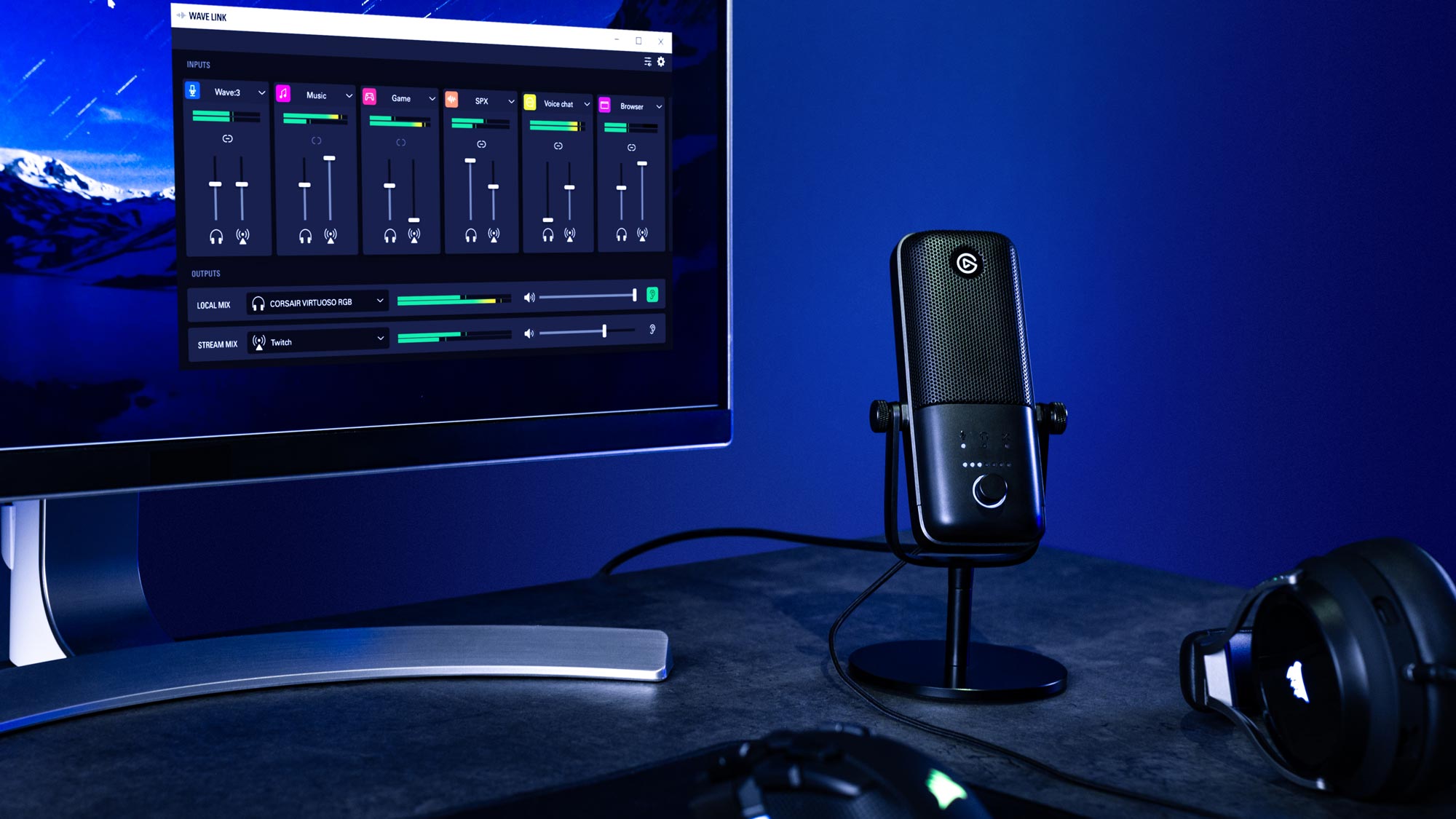
I also recorded outdoors and was impressed at how well the mic captured my voice, even at 2 to 3 feet away. The Wave 3 also picked up the lovely ambient sounds of birds chirping and the occasional helicopter and plane flying over.
No matter where I was, the recordings I made were super clear with no distortion, even beyond the recommended distance ranges.
Software
Similar to most USB microphones on the market, the Wave 3 has proprietary software designed to enhance its performance. The Wave Link software set up is quick and easy. Not only does it give you more control of the mic gain, headphone volume and mic/pc mix, it also provides the ability to control up to eight other audio inputs and resources your computer is using.
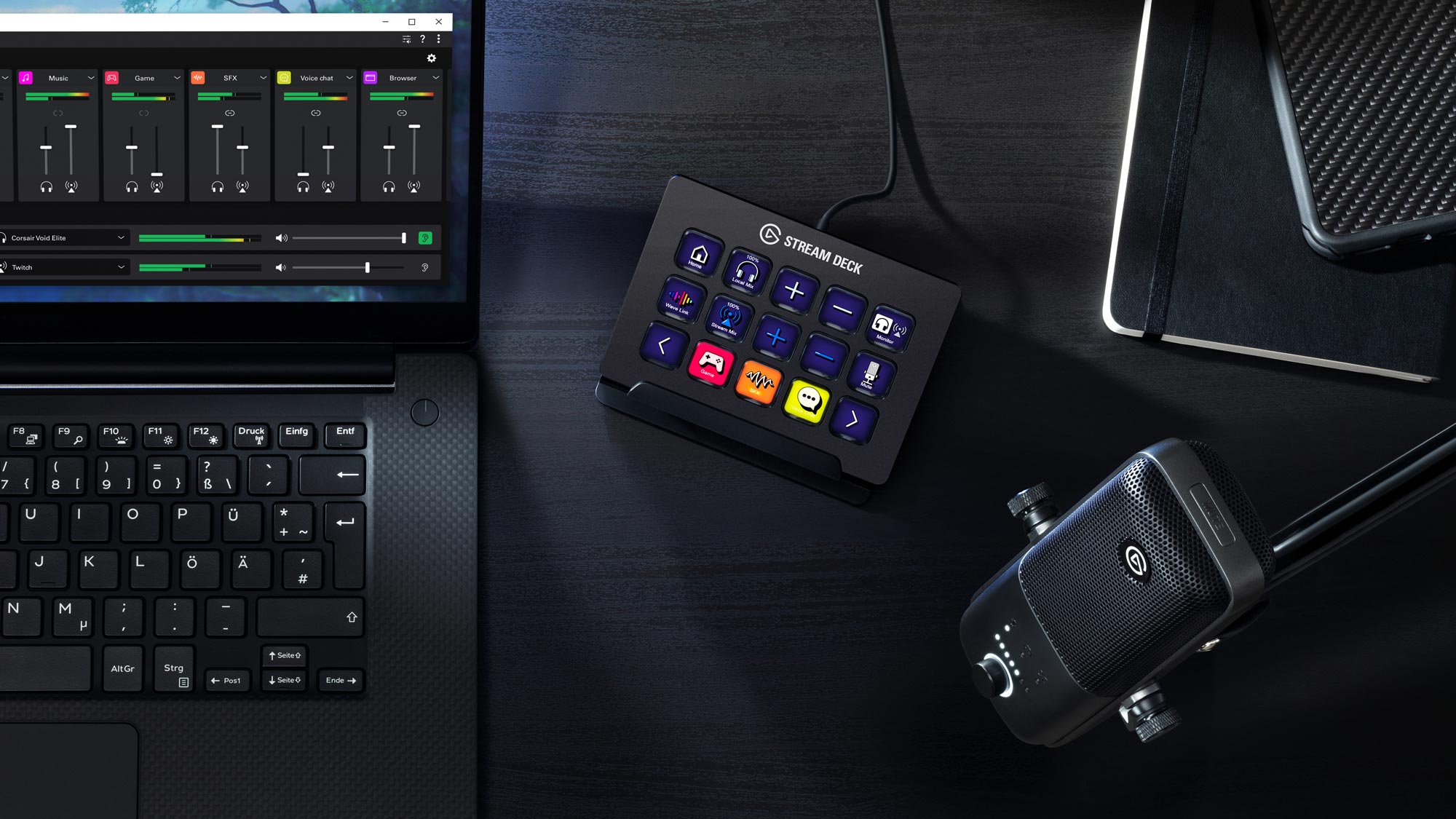
Additionally, you can control external resources outside of the mic, such as audio pulled from your web browser or even an additional USB mic connected to your computer. This master digital mixing board allows you to create two independent output mixes, one for yourself and one for your audience, while easily working in tandem with other software, such as OBS, Audacity, or Elgato’s own Stream Deck, to give the user a great deal of options and control.
But the biggest feature by far is Elgato’s Wave Link software. As most PC content creators are aware, it’s impossible to connect more than one mic and record separate audio tracks for each mic or audio source. You can (kind of) do it on a Mac via Garageband, but it can still be a bit of a hassle. Wave Link makes multiple mic recording a seamless experience no matter the operating system. Plus, it does it with an easy-to-learn user interface.
Bottom line
The Elgato Wave 3 is an excellent USB Microphone. For $159, you get a device that provides excellent sound whether you’re live streaming or recording. The proprietary software is easy-to-use and allows you to blend multiple audio sources, including mics, without a physical mixer. However, it will record the multiple sources to one track, which remains an issue with computer recording in general. But Elgato is heading in the right direction. Plus, it’s lightweight and travel-ready, and it looks elegant and professional.
However, if you’re not a fan of the plastic design or the price, you’ll want to consider the Blue Yeti Nano, which is a small powerhouse in its own right. For $99, you get a compact mic capable of capturing high-quality audio in a premium, all-metal casing.

Mark has spent 20 years headlining comedy shows around the country and made appearances on ABC, MTV, Comedy Central, Howard Stern, Food Network, and Sirius XM Radio. He has written about every topic imaginable, from dating, family, politics, social issues, and tech. He wrote his first tech articles for the now-defunct Dads On Tech 10 years ago, and his passion for combining humor and tech has grown under the tutelage of the Laptop Mag team. His penchant for tearing things down and rebuilding them did not make Mark popular at home, however, when he got his hands on the legendary Commodore 64, his passion for all things tech deepened. These days, when he is not filming, editing footage, tinkering with cameras and laptops, or on stage, he can be found at his desk snacking, writing about everything tech, new jokes, or scripts he dreams of filming.
